The most common headwear for early 16th century German women of most classes, with the bulge at the back of head creating a distinctive profile.
The basic structure can be worn with many types of wraps over the top, creating very different looks.
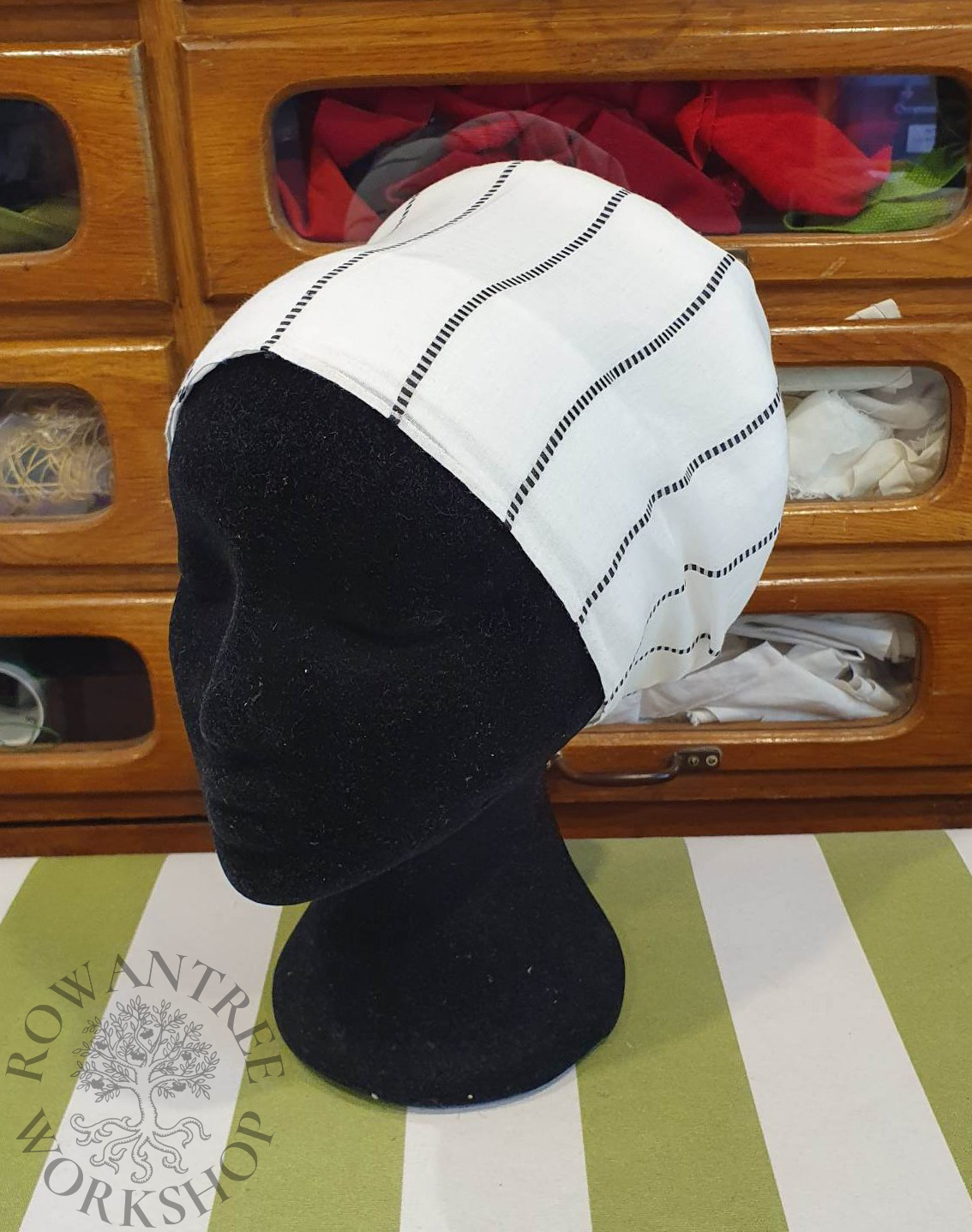
When I first wanted to make this style of headwear (well before Textiler Hausrat (Zander-Seidel, 1990) was published), I realised my short hair was an issue, so I made myself a linen cap with a built-in roll at the back, to simulate my non-existent braids. This worked to give the silhouette and was quick to put on, but was not always secure and was hard to launder. Other people came up with related solutions, but they all had the same problem.
With access to Textiler Hausrat, I decide to rethink my approach – I was sure that since many women wore this headwear every day, it had to be easy to launder. I thought it should be possible to make it all out of flat pieces of linen, with a separate padded roll, so I experimented with this.
The result is practical headwear, which works well with my middle class Burgher outfits.
Research and Design
Images of women wearing the Steuchlein are prevalent in Germanic artwork from 1500 – 1570s. It is the archetypical headwear for middle class women in the first half of the century, and also worn by lower class women, but rarely by nobles.
The shape changes over time, initially a very large bulge, then more moderate and eventually becoming a much smaller bulge at the back of the head, as can be seen in the progression of paintings below.
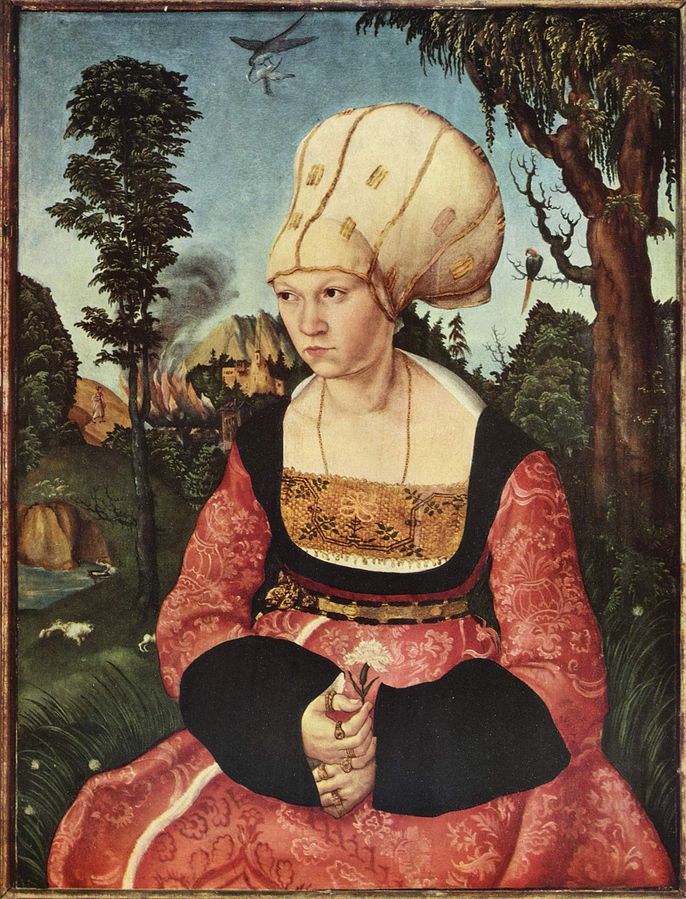
Source: Wikimedia
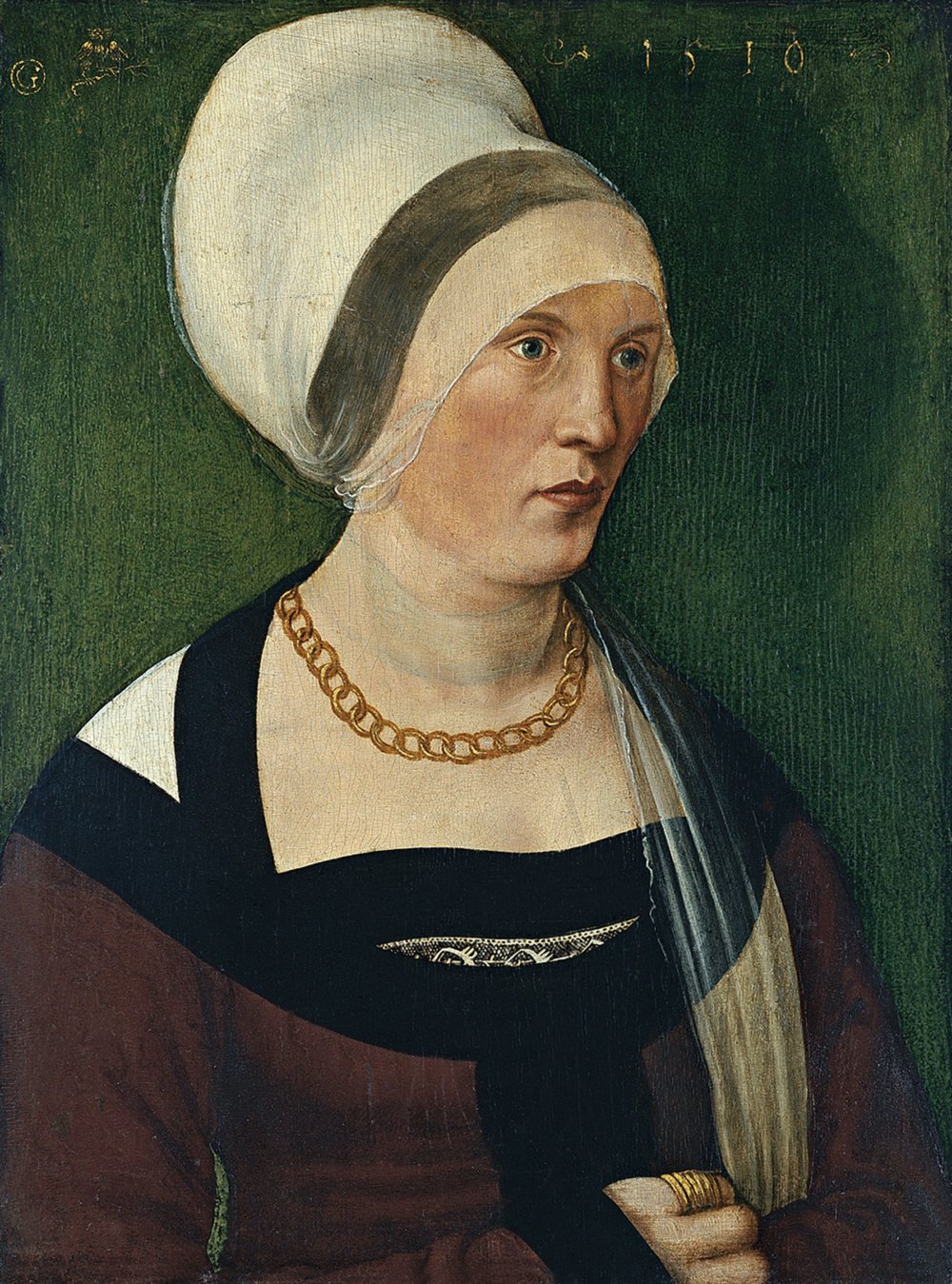
Source: Thyssen-Bornemisza
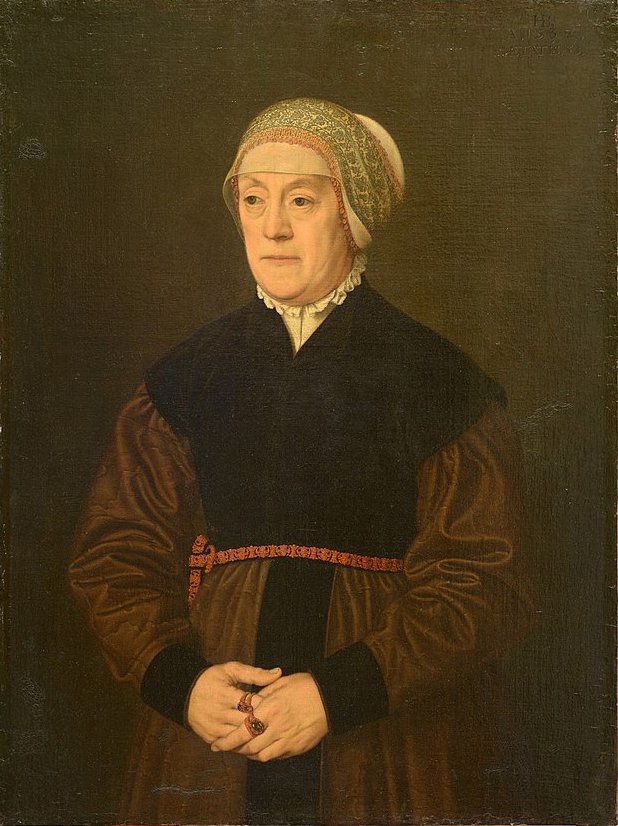
Source: Wikimedia
Textiler Hausrat (Zander-Seidel, 1990) notes that there are many contemporary terms for this group of headwear styles including Steuchlein (‘little bundle’), Bündlein (‘little band’) and Köpflein (‘little head’).
The term ‘Steuchlein‘ itself is confusing: in contemporary accounts (such as wills) it can refer to the top/decorated layer – or to the entire headdress!
The Steuchlein headdress is made of several different elements:
- Wulst – ‘bulge’ – padded ring or roll, worn to increase the volume over the base of plaited hair
- Wultsthaube – ‘bulge-cap’ or Unterhaub ‘under-cap’ – white linen cloth worn to secure the Wulst
- Steuchlein – linen or woollen cloth worn over the top, which may be plain or decorated with stripes, or a decorated Borte (border/braid)
- Schleier – ‘veil’ – worn over the top of the Wulsthaube in place of the Steuchlein, or over the top as a fine veil in linen or silk, which may have a decorated edge (worn by married woman).
For the foundation, the hair is put into two plaits, taped or pinned in a coronet around the head, as seen in the artworks by Beham and Cranach below. The natural bulk of the hair could be increased with false hair, and/or the Wulst.
Images of women wearing just the Wulhaube are rare, and are always in informal situations (as with the taped hair). This portrait by Dürer (probably of his wife) shows the foundation Haube.


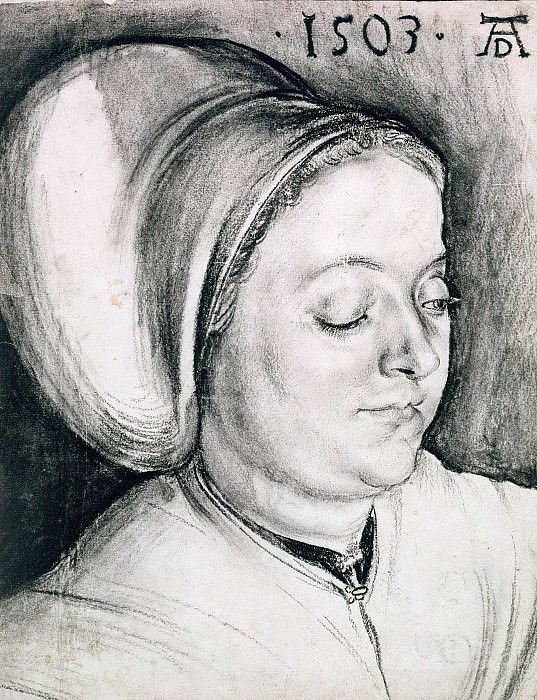
Images of women wearing the Steuchlein are very common in paintings of middle class women. Since many of these are formal portraits of married women, the fine veils are a common element.
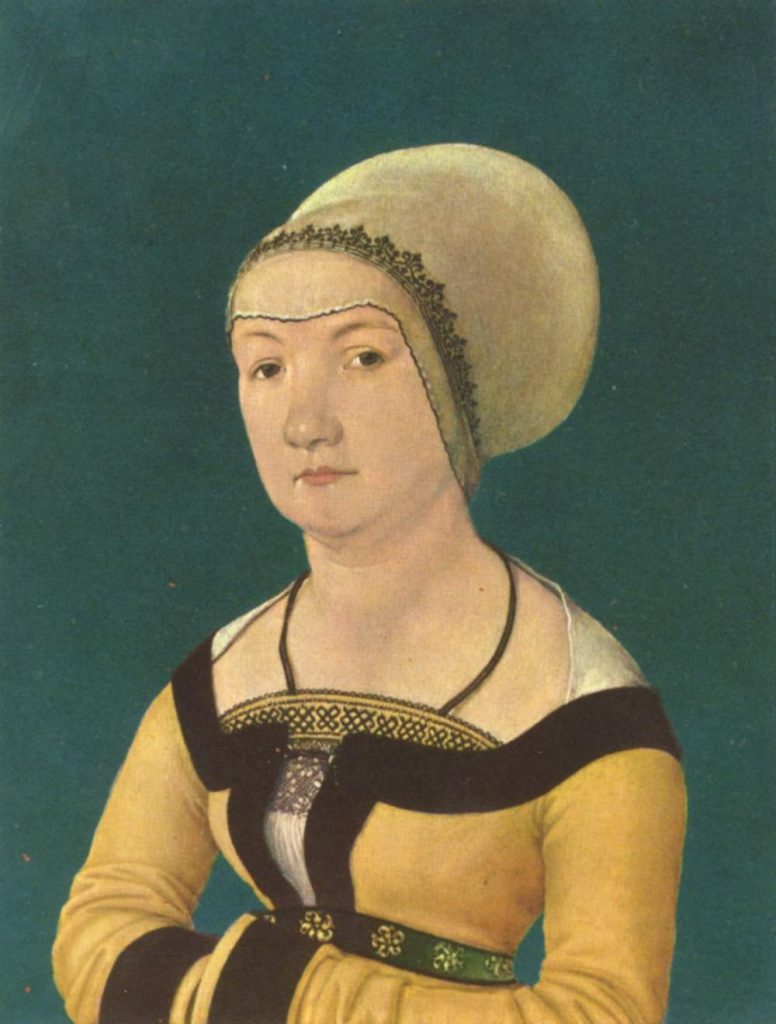
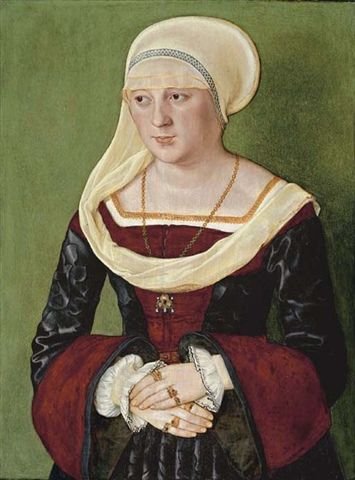

Source: The Metropolitan Museum
However, they are not always worn – especially in less formal contexts, or for lower class women.
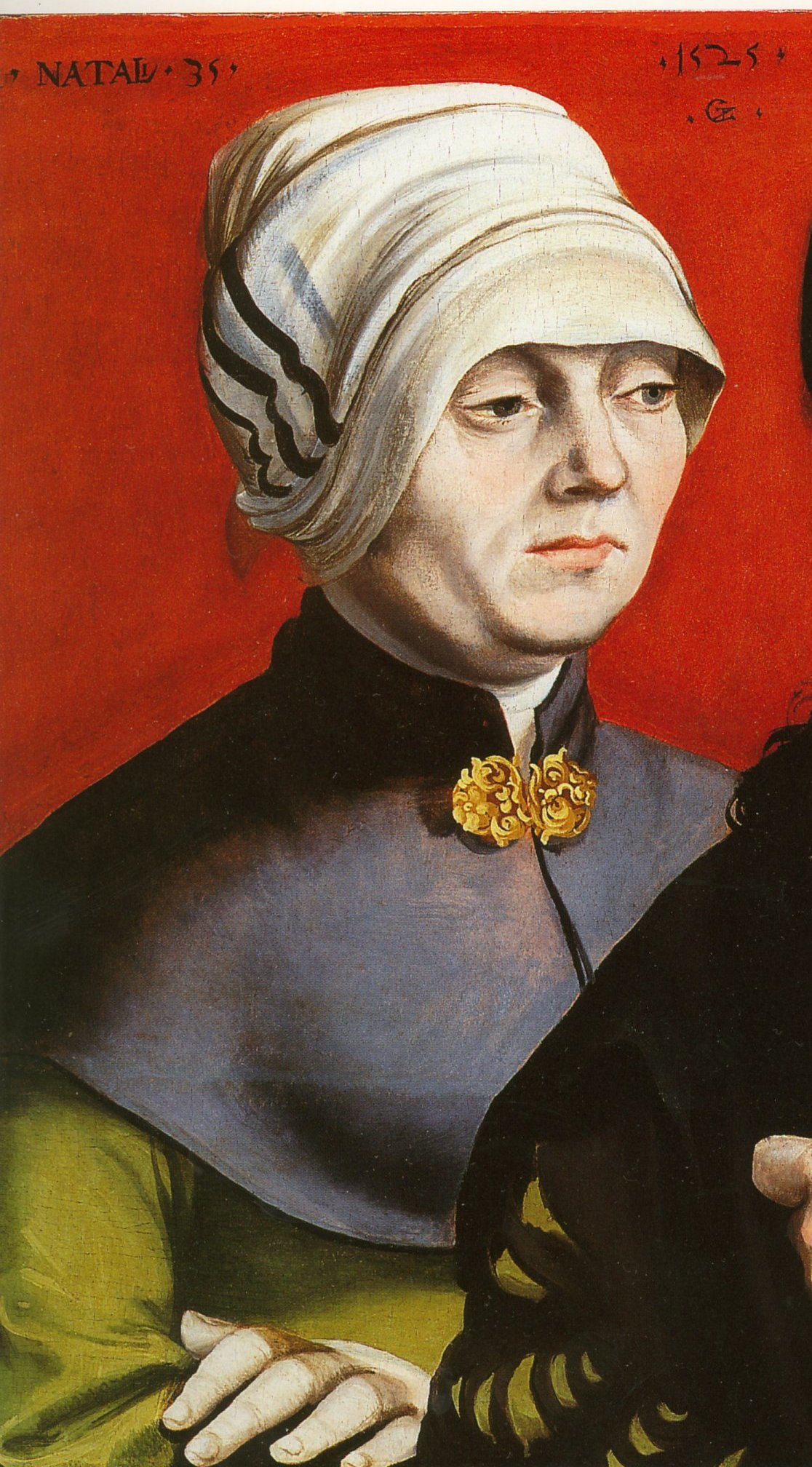
Source: Wikipedia

Source: Geisberg (1974)
I had come up with a working model for the headdress, made of several layers. Then I discovered a video by Marion McNeally which showed her approach to setting Wulsthaub using pins on headform, then basting it together for wear.
This video confirmed many of my ideas about layers and support, and included another vital element – the Umbinderlein – a strip of cloth, known from inventories, used to keep the hair back from the face.
However, I have very short hair – I cannot tape it up into braids to act as a support for the Wulst, as was clearly the practice in period. In addition, I needed headwear that could be put together in the middle of a campsite, without the need for a headform or advance planning.
After some experimentation, I came up with a version which works for me – it is based on historical models, looks good, is easy to wear – and easy to launder.
Construction
This approach to the Steuchlein is made up the elements detailed above.
Wulst – The historic Wulst was probably soft – there are extant examples of fake hair pieces from this time. Since I don’t have plaits, my Wulst needs to be stiff and solid enough to support the outer layers, while still light enough to wear.
I made mine from fresh hazel twigs, twined into a slightly oval wreath. Once they dried, I covered the base in strips of wool batting to make it thick, then sewed a linen cover over the top.
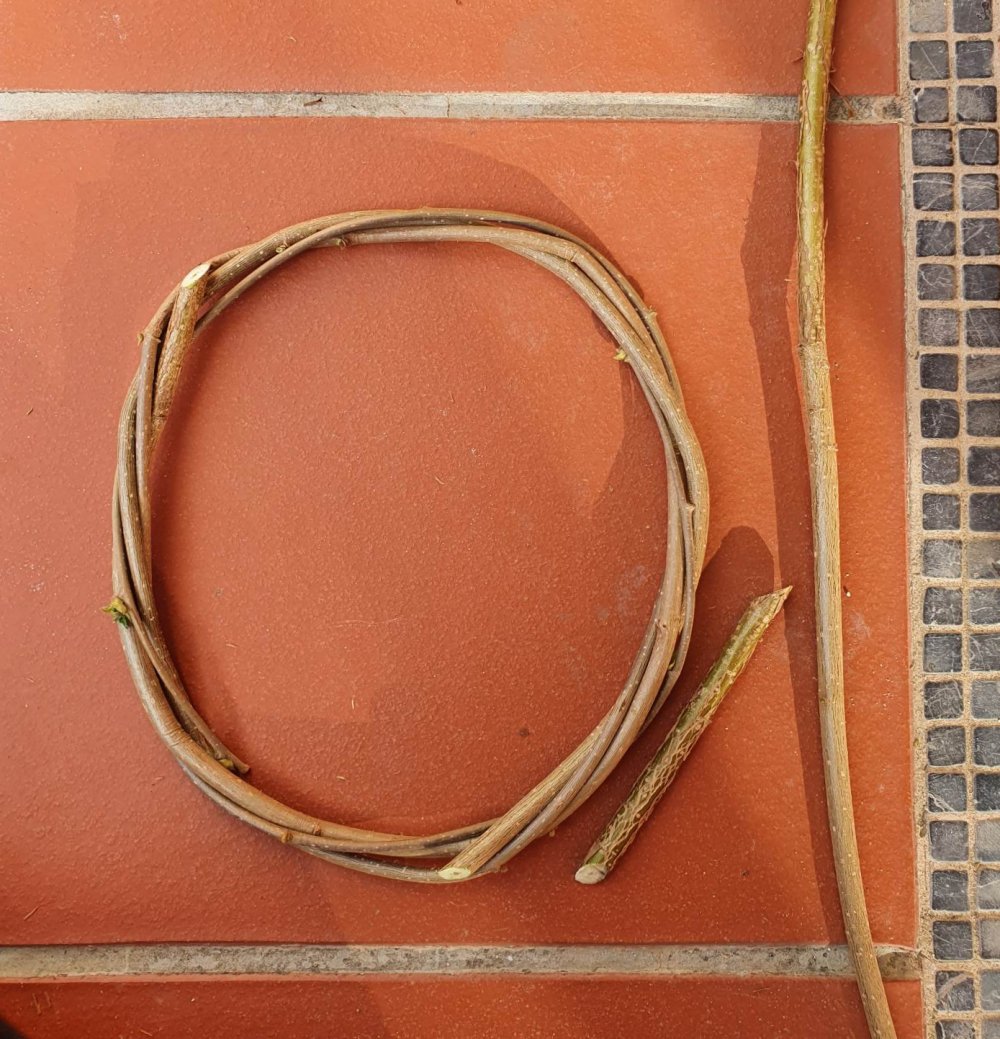
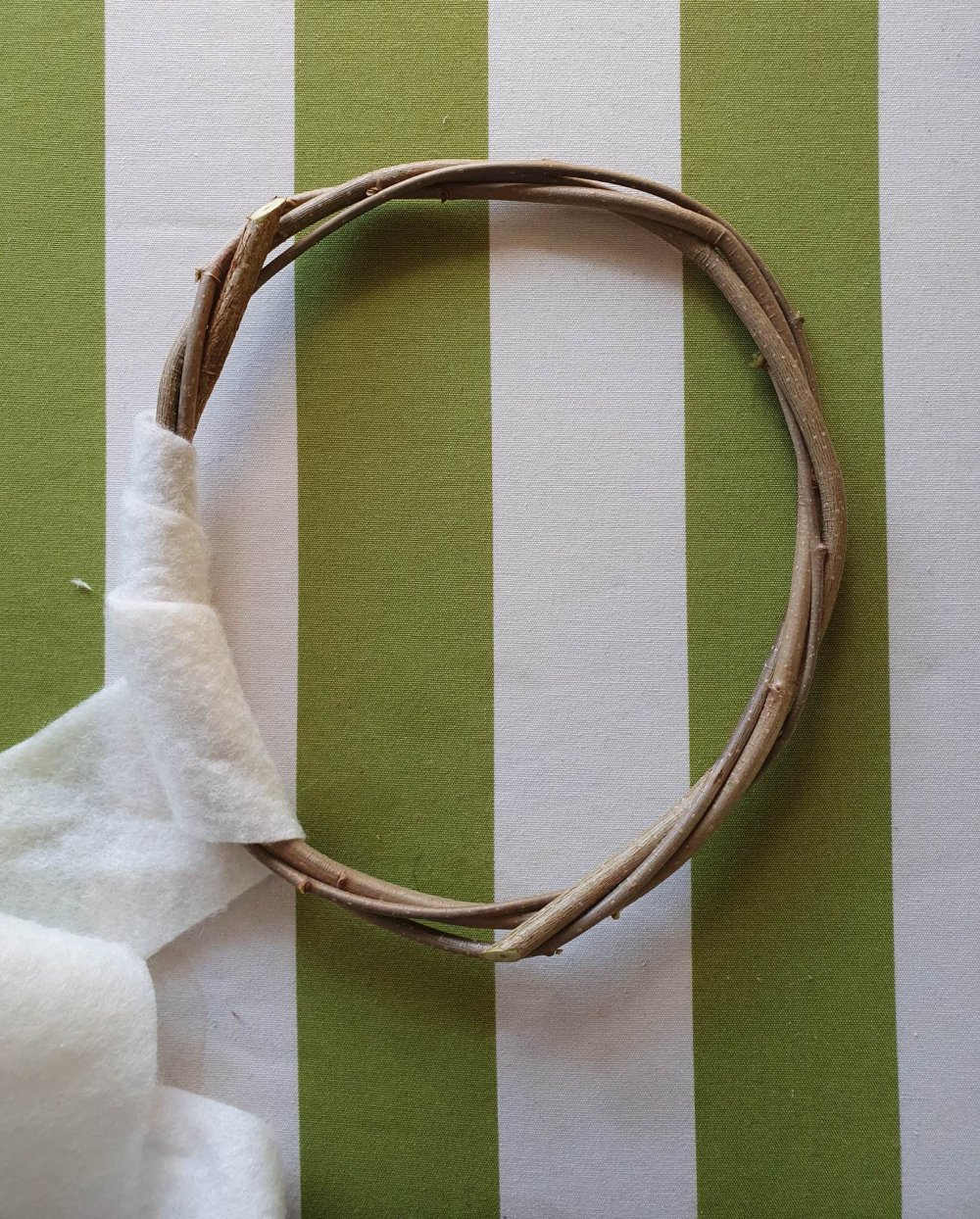

Umbinderlein – A narrow strip of linen, long enough to go around your head and tie at the nape of the neck. Mine is 75cm by 3cm, made of fine linen with a fine hem all around.
Wultsthaube – This needs to be large enough to hold the Wulst securely in place. I made mine in lightweight linen 55cm by 30cm, sewing a fine hem all around. I sewed a 75cm fine twill tape to the front corners – long enough to wrap around my head and tie at the nape of the neck.
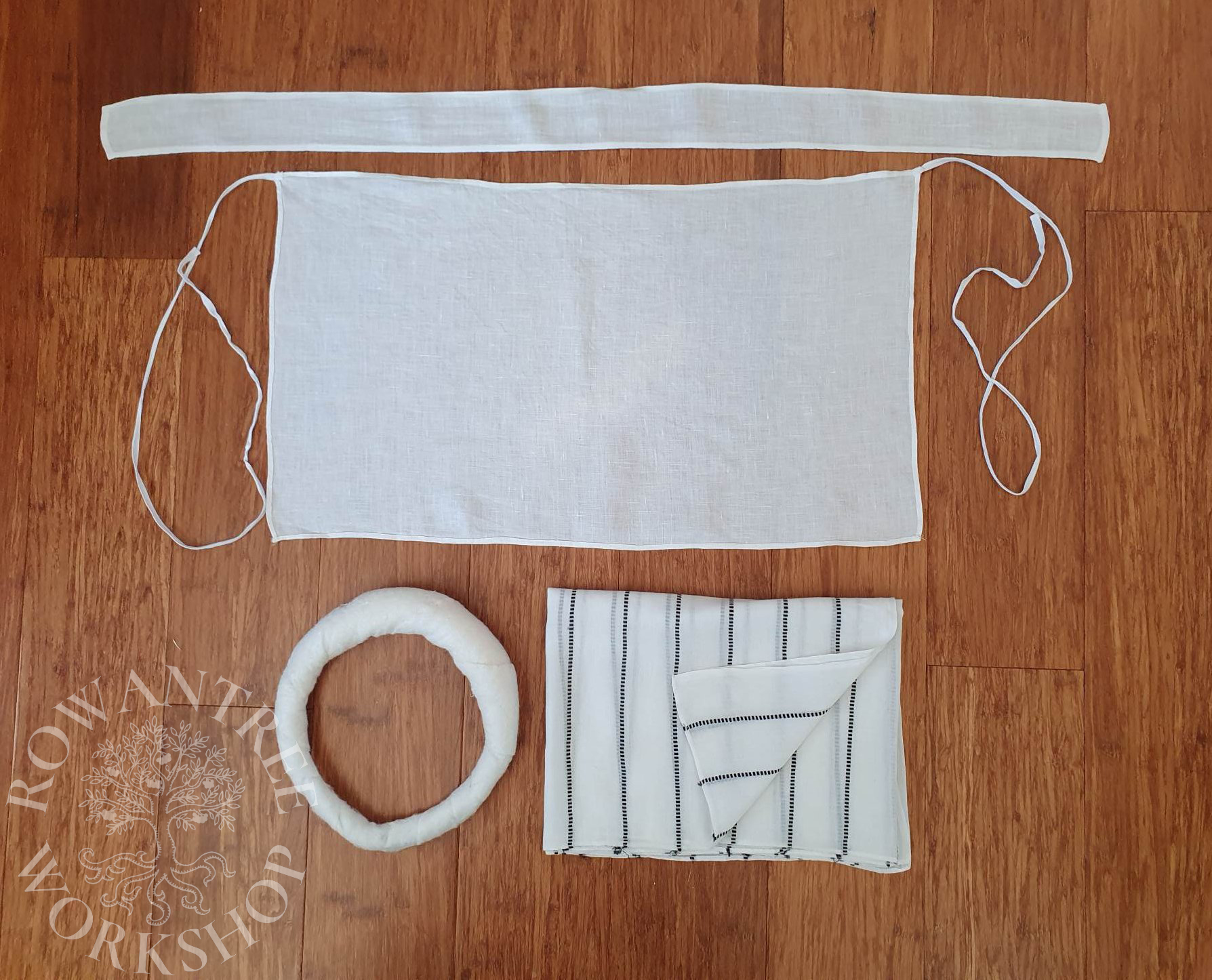
Steuchlein – The fun layer! Size depends on how you want to wear it, but it needs to be a minimum of about 45cm by 75cm to wrap over the Wulsthaube. I have larger versions, up to 55cm x 2m, for style which need a lot of wrapping. The example in the picture is made of fine striped linen, but I have others in plain linen, fine wool, and embroidered linen.
Assembly
I usually put on my headwear once I have my Unterrock on, but before adding the Rock.
I start by tying the Umbinderlein around my hairline to hold back the hair. I tie it in a knot at the back, then tuck in the ends. Next, I drape the Wulsthaube on top of the Umbinderlein, ties to the front.
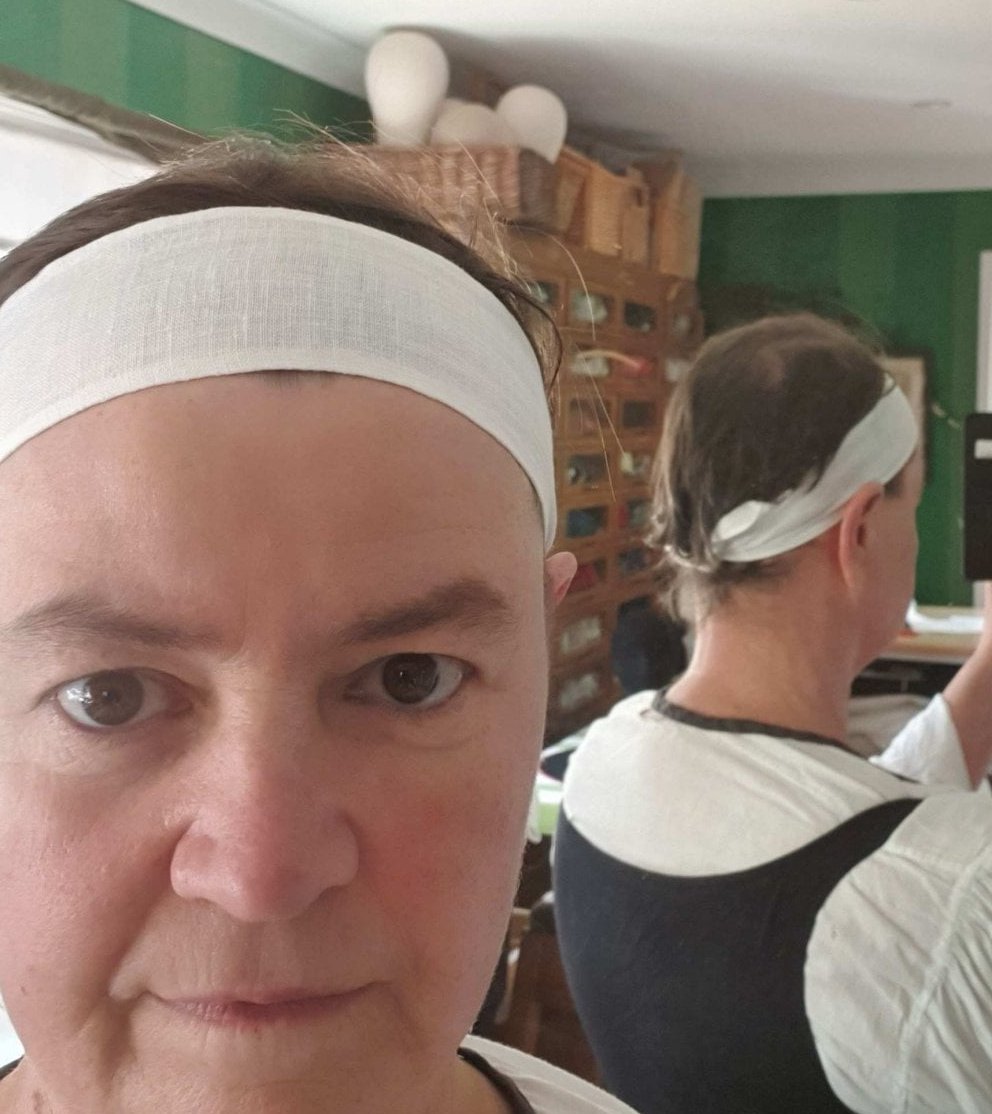
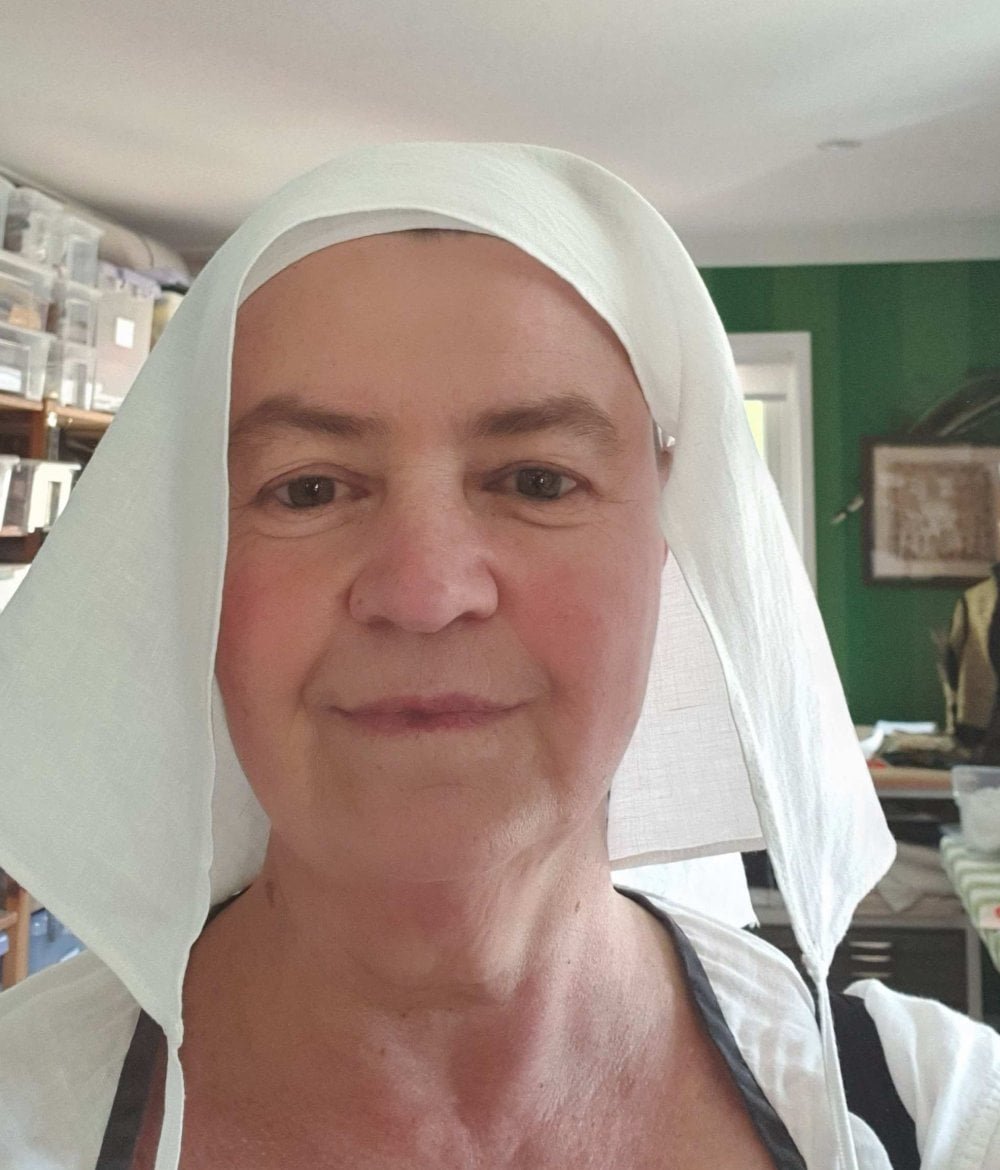
I take the ties to the back, make a half knot, then bring to the front and hold them in my teeth to keep the tension. I slip the Wulst in under the Wulsthaube from the back, resting the base on the Umbinderlein knot. The top of the Wulst needs to be further back than you want – it will move forward once it is tied.
(If I had long hair, the Wulst would sit around my dressed hair, which would help hold it in place.)
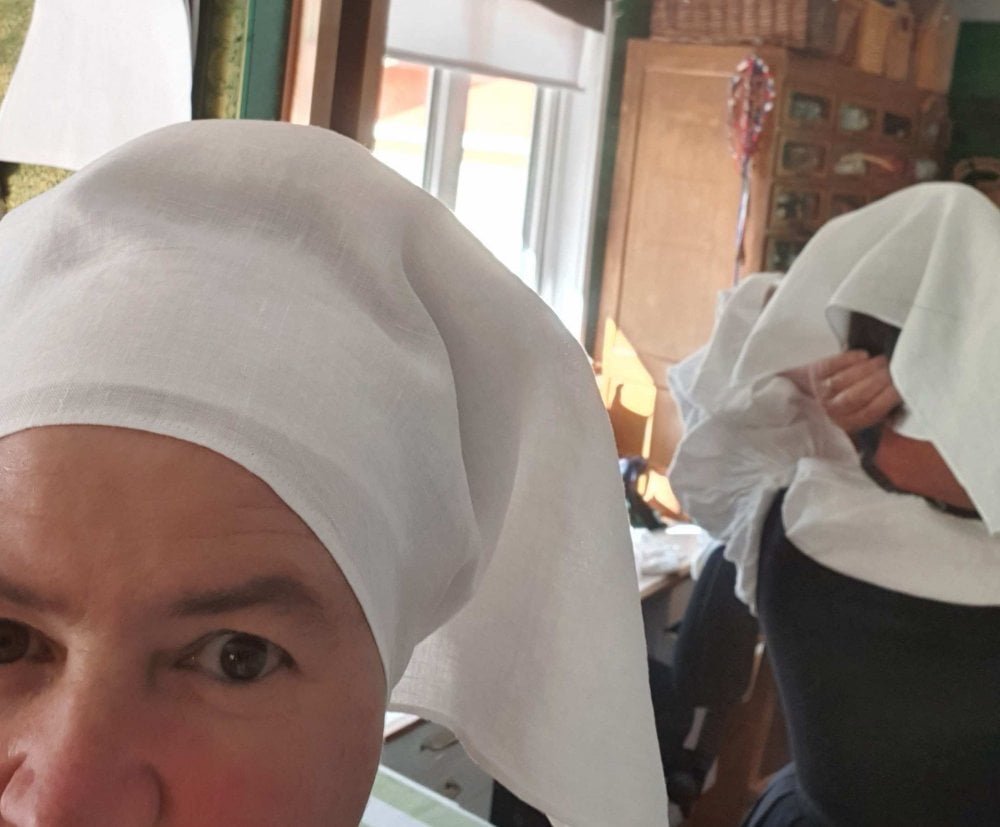


I cross the ends of the tie on top, keeping them tight, then back down to tie them at the nape of my neck and tuck in the ends. The ties need to be firm to hold the whole thing together. With a bit more care, you can get a smooth finish on the Wulst, rather then pleats I have here!
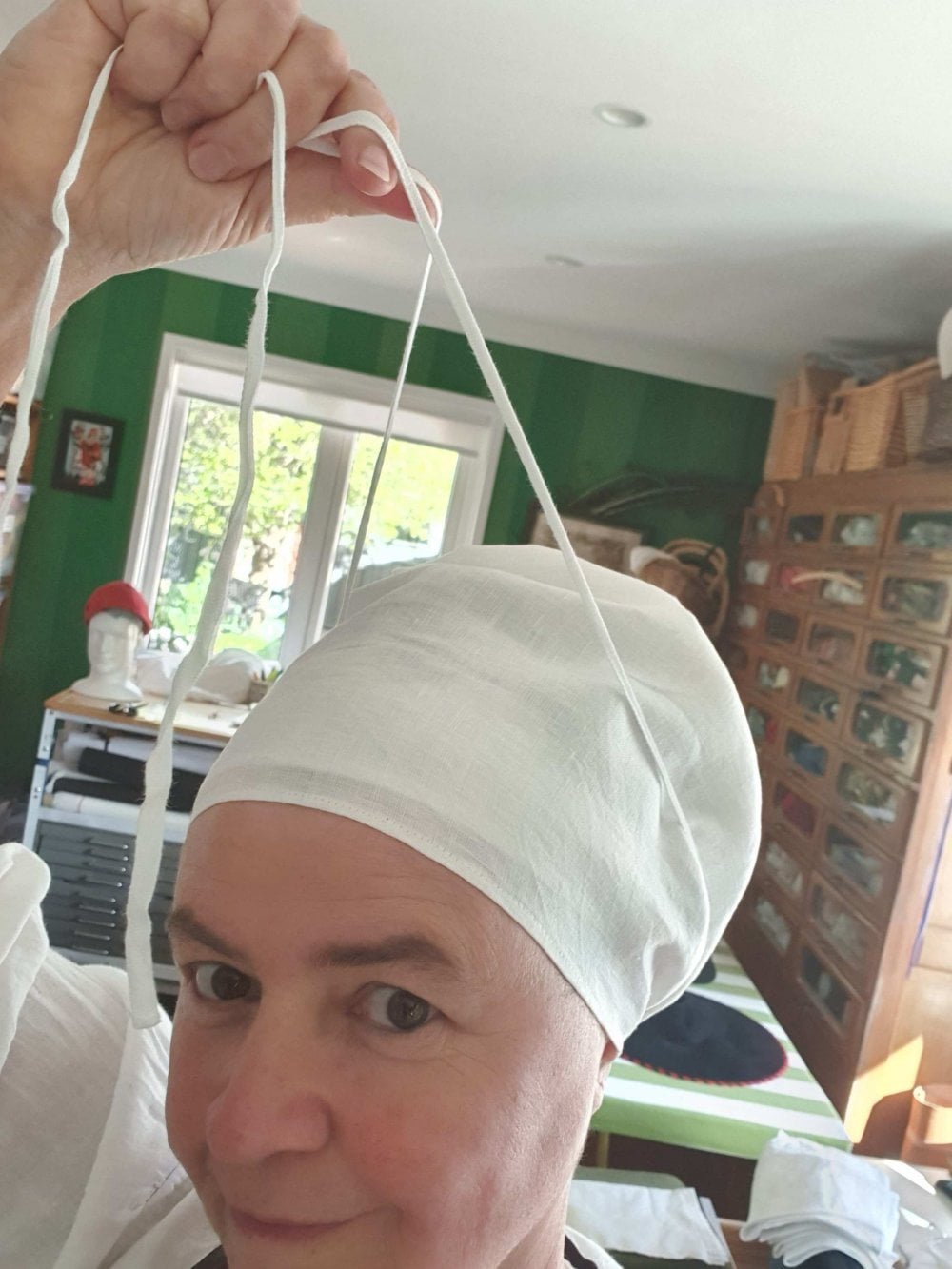

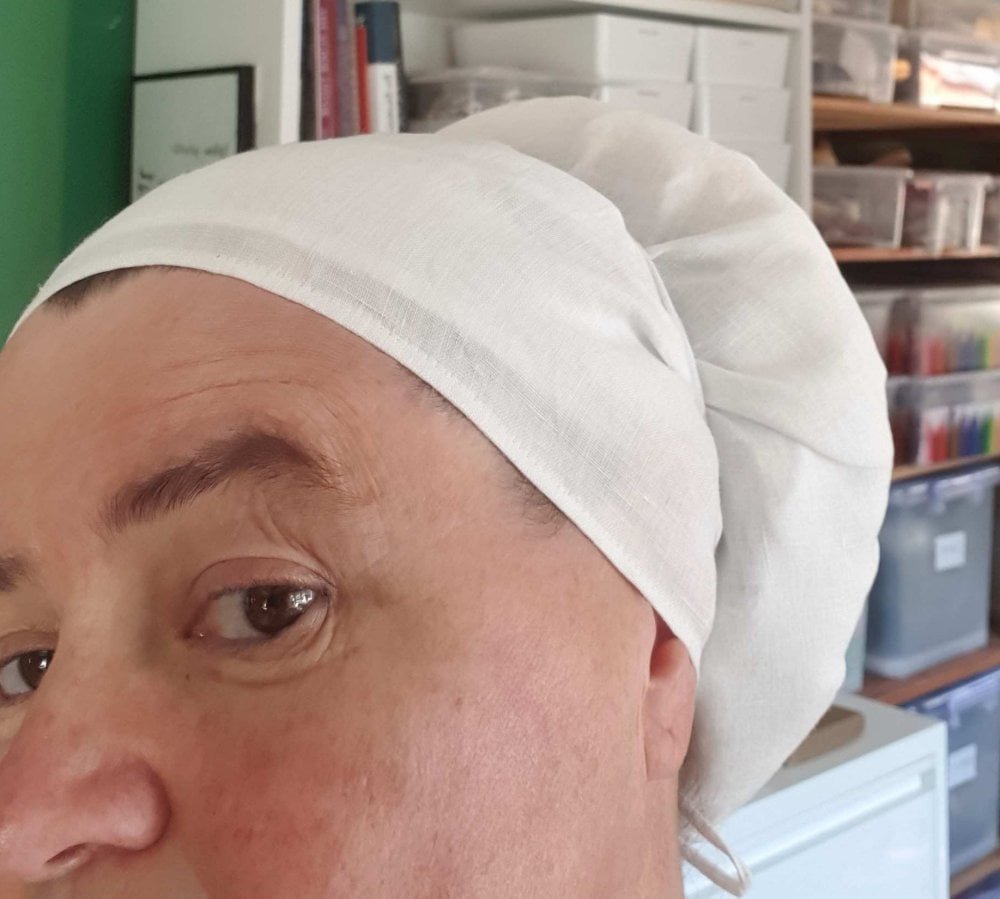
Once the Wulst is firmly in place, I drape the Steuchlein over the top and tie and/or pin it to get the look I want. I might add a Schleier over the top, in a more formal setting.
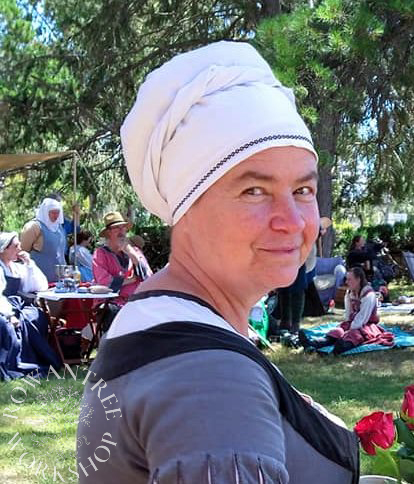


I have also made some embroidered versions, one based on a Holbein portrait, and another on a modelbook design.
For some different ways to wear the Steuchlein, Marion McNeally’s video provides clear instructions.

